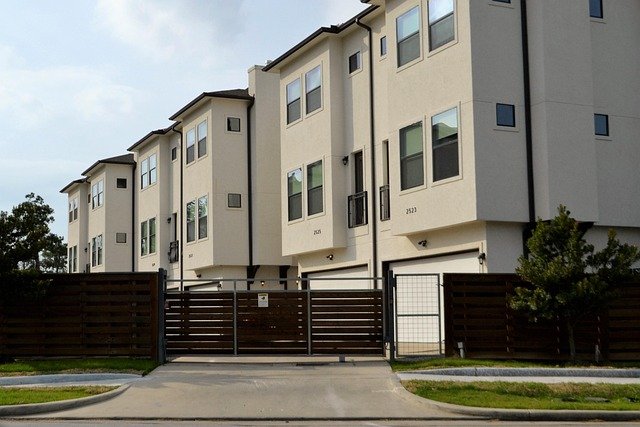Housing Assistance Programs Explained: Support Options for Single Mothers
Securing safe and affordable housing can be especially challenging for single mothers navigating economic uncertainty. This guide explores how various government-backed and nonprofit-supported programs are designed to help reduce housing costs. From rental subsidies under Section 8 to funding opportunities through HUD and USDA initiatives, each option is structured to ease financial strain and support long-term stability. Learn more about how these resources are generally accessed and what factors participants often weigh when exploring eligibility.

Single mothers represent one of the most vulnerable populations in the housing market, often struggling with limited income while managing childcare responsibilities. Housing costs consume a significant portion of household budgets, making assistance programs crucial for achieving stability. Government agencies and nonprofit organizations have developed comprehensive support systems specifically designed to address these challenges.
What Is Section 8 Housing and How Does It Work?
Section 8 housing, officially known as the Housing Choice Voucher Program, provides rental assistance to eligible low-income families. Administered by local Public Housing Agencies (PHAs), this program allows participants to choose their own housing, including single-family homes, townhouses, and apartments. The program pays a portion of rent directly to landlords, with families typically contributing 30% of their adjusted gross income toward housing costs.
Eligibility requirements include meeting income limits set at 50% of the median income for the area. Single mothers often qualify due to lower household incomes and dependent children. Wait times vary significantly by location, with some areas having lists closed for years while others process applications more quickly.
Understanding HUD Home Assistance Programs
The U.S. Department of Housing and Urban Development (HUD) offers multiple programs beyond Section 8 vouchers. HUD home assistance includes public housing developments, project-based rental assistance, and supportive housing programs. These initiatives provide affordable rental options in HUD-owned or subsidized properties.
Public housing developments offer reduced-rent apartments managed by local housing authorities. Project-based assistance ties rental subsidies to specific properties rather than individual vouchers. Supportive housing programs combine affordable housing with services like childcare, job training, and educational support, particularly beneficial for single mothers transitioning from difficult circumstances.
USDA Rural Housing Grant Opportunities
The United States Department of Agriculture (USDA) provides housing assistance specifically for rural areas through various grant and loan programs. The USDA Rural Housing Grant program offers direct assistance for home repairs, rental assistance, and homeownership opportunities in eligible rural communities.
Single mothers in rural areas can access USDA Rural Development programs including direct home loans with reduced interest rates, rental assistance payments, and housing preservation grants. These programs often have more flexible qualification requirements than urban housing programs and may offer faster processing times due to lower demand in rural markets.
First Time Homebuyer Programs for Single Mothers
First time homebuyer programs provide pathways to homeownership through down payment assistance, reduced interest rates, and flexible qualification criteria. Many programs specifically target single mothers or offer additional benefits for households with children. FHA loans require lower down payments and accept lower credit scores than conventional mortgages.
State and local first time homebuyer programs often provide grants or forgivable loans for down payments and closing costs. Some programs offer homebuyer education courses that provide valuable financial literacy skills. VA loans, available to eligible veterans, offer zero down payment options for single mothers who served in the military.
| Program Type | Provider | Cost/Benefit | Key Features |
|---|---|---|---|
| Section 8 Vouchers | Local PHAs | Family pays 30% of income | Portable, choice of housing |
| Public Housing | HUD/Local Authorities | Reduced rent based on income | Fixed location, immediate availability |
| USDA Direct Loans | USDA Rural Development | 1% interest rate possible | Rural areas only, flexible credit |
| FHA Loans | FHA-approved lenders | 3.5% down payment minimum | Lower credit requirements |
| State Down Payment Assistance | State Housing Agencies | $2,000-$15,000 grants typical | First-time buyer programs |
Prices, rates, or cost estimates mentioned in this article are based on the latest available information but may change over time. Independent research is advised before making financial decisions.
Application Process and Timeline Considerations
Applying for housing assistance requires gathering extensive documentation including income verification, identification, and family composition records. Most programs have lengthy application processes with wait times ranging from months to years. Single mothers should apply for multiple programs simultaneously to increase their chances of receiving assistance.
Maintaining accurate records and promptly responding to requests for additional information helps expedite processing. Many programs conduct annual recertifications to verify continued eligibility. Understanding program requirements and deadlines prevents delays or loss of benefits.
Housing assistance programs provide essential support for single mothers seeking stable, affordable housing. From rental assistance through Section 8 vouchers to homeownership opportunities via first time homebuyer programs, multiple options exist to address different needs and circumstances. USDA rural housing grants serve families in agricultural communities, while HUD home assistance offers urban solutions. Success requires patience, preparation, and persistence in navigating application processes, but these programs can provide the foundation for long-term housing stability and family success.




